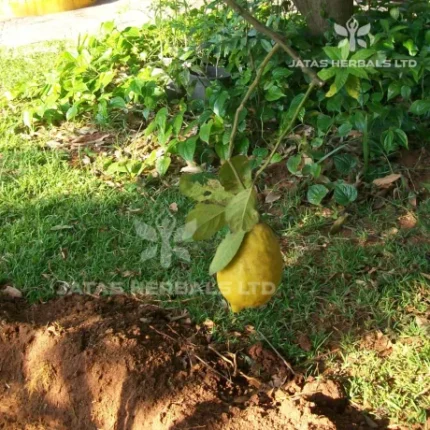Caraka mentioned narangi as nagaranga (C.S.Su.27/154) while, susruta quoted it as naranga (S.S.Su.46/39,161). Vaghata did not mention either of these names. However, airavata described by brhat trayi is identified as naranga. It is one among the amla varga in nighantus. It is also known for its hrdya property. Like jambira and nimbuka there is confusion between orange and sweet orange. The former is known as ‘narinja kaya’ while the later one is known as ‘kamala phalam’ in Andhra Pradesh. They are identified as C. maderaspatana Tanaka and C. reticulata Blanco respectively. Another species C. aurantium Linn., is the bitter or sour orange. Author had photographed this plant from a village called Aryavatam in East Godavari Dist. Andhra Pradesh. Owing to the commercial importance sweet oranges are often called as oranges. In north India also both orange and sweet orange are identified as narangi and santra. It is important to note that there are other varieties of narangi or orange species viz., C. aurantium Linn. – (Khatta / Mallika-narangi); C. Madurensis Lour. Syn.: C. ighantuy Bunge; C. mitis Blanco (China Orange); C. unshiu Marcovitch (Satsuma Orange) etc. Simpilarly, apart from C. reticulata Blanco (loose skinned orange), there is another variety of santra viz., C. deliciosa Tenore. Syn.: C. reticulata Blanco var. deliciosa R. Singh & Nath. There one important and commonly used variety of Citrus fruit which is not found in the nighantus is C. sinensis (Linn.) Osbeck known as Mosambi in Hindi and Battai kaya in Telugu if famous as tight skinned orange or sweet lemon. It is ighantuy used in India. Probably, it is an exotic plant or it might be covered under bigger varieties of lemon.
Botanical description – A moderate-sized, bushy, evergreen, glabrous tree; leaves slender, petiole short, naked or winged; leaflets elliptic or ovate, acute or obtuse; flowers white, bisexual; fruit subglobose-globose, flattened on the top; ring loose, thin, easily separable; bright orange or scarlet orange in colour when ripe; pulp juicy, sweet to subacid. Flowering in January-February and fruiting during September-October. Widely cultivated in subtropical regions of India, plains in Assam, Meghalaya, West Bengal, Sikkim, Uttar Pradesh, Punjab, Kashmir, Madhya Pradesh, Maharashtra and Karnataka.
Chemical constituents – Calmodulin (protein), amino acids, vitamin A, B, C, abscisic acid, anthocyanins, coniferin, syringin, limonin, nomilin, naringin etc.
Part used – fruit, flowers
Uses – Fruit juice acts as antiemetic, astringent, laxative, appetizer etc. Flowers are ighantuy ass timulating.





Reviews
There are no reviews yet.